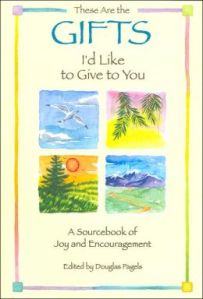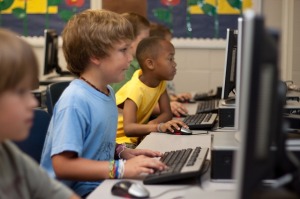“Every individual is a marvel of unknown and unrealized possibilities” – W.G. Jordon
 This quote is from a fantastic book called “These are the Gifts I’d Like to Give to You: A Sourcebook of Joy and Encouragement.” I read quotes from this book frequently, and the topic of OCC this week reminded me of the section, “The Gift of Understanding What Makes You So Outstanding”
This quote is from a fantastic book called “These are the Gifts I’d Like to Give to You: A Sourcebook of Joy and Encouragement.” I read quotes from this book frequently, and the topic of OCC this week reminded me of the section, “The Gift of Understanding What Makes You So Outstanding”
David O’Brien suggests thinking of literacy competency in broader terms, focusing on students’ strengths, not deficits in his article “At-Risk” Adolescents: Redefining Competence Through the Multiliteracies of Intermediality, Visual Arts, and Representation. I think this is an important viewpoint for educators. The question is, how to we help students access and utilize their strengths in the classroom?
In the entry “Online Content Construction: Students as Informed Readers and Writers of Multimodal Information” from The Connecticut Reading Association Journal • Volume 1 • Issue 1, O’Byrne addresses this question of how to use Online Content Construction (OCC) in the classroom.
The Three Phases of Online Content Construction instructional model (O’Byrne, 2012)
Phase 1: Students engage in Online Reading Comprehension and Online Collaborative Inquiry-critically research a topic, design and plan on paper.
Phase 2: Students construct online content using their plans/mock-ups from phase 1. Content can be delivered in a variety of forms including websites, videos, photos, podcasts, blogs, wikis, etc.
Phase 3: Students compare their work to exemplar material of the same type (provided by the teacher) to reflect and revise their content.
The OCC instruction model ends with collaborative presentations of student work, culminating in a conference/discussion with the teacher about the students’ process and product. This type of learning and representation of knowledge seems so powerful in its capacity for self-directed learning, student engagement, and differentiation. I envision students being highly engaged and having fun while practicing advanced literacy and creative skills.
In the same article, O’Byrne mirrors traditional text based reading skills (encoding and decoding) through an online lens. He writes, “as constructors of online content, students and teachers work to redesign or reinvent online texts by actively encoding and decoding meaning in multimodal texts.” (O’Byrne, 2012).
This brings us to a more complex issue of creating original content. I agree with Kirby Ferguson’s idea of the additive nature of creativity. He reminds us in the video, Embracing the Remix, that musicians like Bob Dylan, Danger Mouse, and Woody Guthrie did not “copy” content, but rather “Remixed” by copying, transforming, and combining to create new creative content. If we teach students how to give credit to sources and inspiration, we can use the same principals of “Remixing” in OCC.
These readings remind me of my former analysis of the 5 Cs. I would argue that the ORMS Model and Online Content Construction addresses each of the 5Cs: creativity, communication, collaboration, critical thinking, and comprehension. Students are more likely to achieve each of these objectives through the real world, personally meaningful nature of the work of Online Content Construction.

Thanks for synthesizing the steps to online content creation and the 5C’s. This makes it very realistic to implement in the classroom.Making those connections can also help us convince administration and parents how connected this is the the Common Core and the 21st Century skills our students need for success.
LikeLiked by 1 person
I agree with your thinking about “self-directed learning, student engagement, and differentiation.” I think it provides a ton of opportunities to guide students…but also allow them to guide and direct their own learning. I do wonder about how we can provide more opportunities to scaffold students in the process. What I mean is that if we provide opportunities for them to “write” anything they want, using any tool they want…how do we scaffold and support all of these learners across these varied tools?
Amazing opportunities, but scary consequences. 🙂
LikeLike
I agree that the management and scaffolding of this type of learning is certainly a challenge for teachers! I think that the first critical component would be to teach kids how to appropriately use the variety of tools, and most importantly, teach them how to problem-solve when they are stuck.
When I used iPads with my 3rd graders a lesson that I taught multiple times through interactive modeling was how to be a problem-solver. I believe that kids become more independent and confident, and their learning becomes more meaningful if we teach them from the very beginning that they are capable of finding solutions to their problems. I taught the kids to collaborate with their peers, research a solution, or just trying something out, and come to me if they were still stuck and couldn’t overcome their challenge with technology.
I found that when students are self directed in the use of the technological tool I have more time to conference with individuals or small groups about the content they are producing using these tools. Hopefully as I try new technological resources and platforms I will be able to continue with this student led practice that allows me to focus on the content!
LikeLike